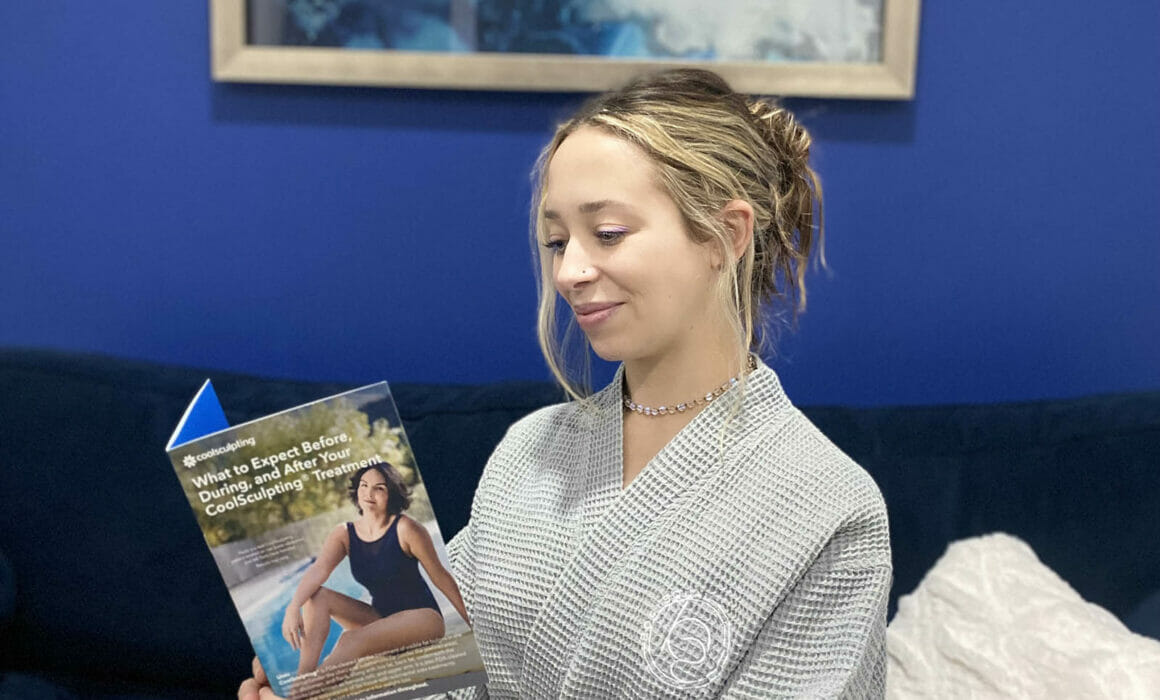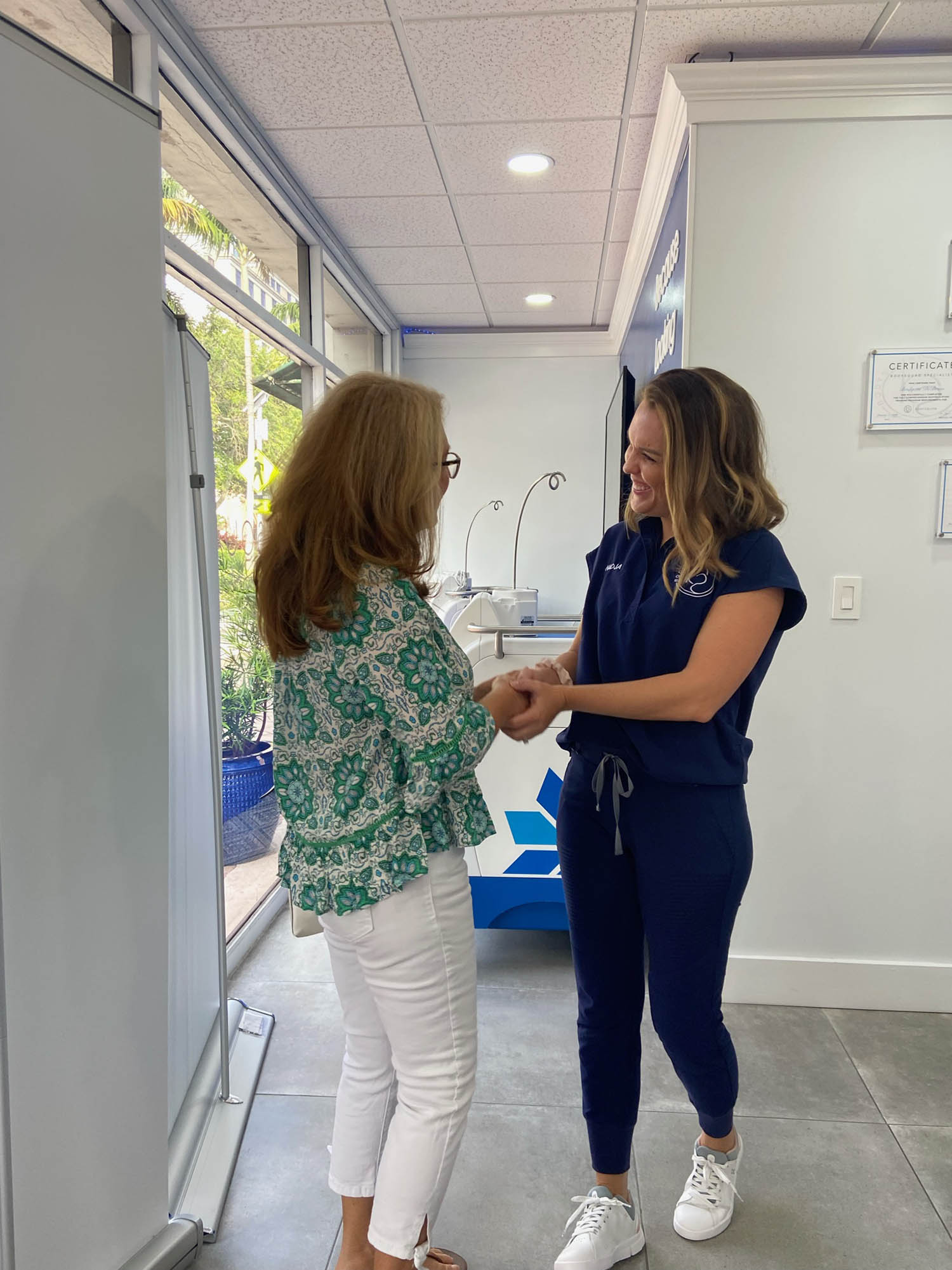7 CoolSculpting Aftercare Tips
CoolSculpting is one of the most popular non-invasive body contouring treatments available today, and for good reason. It’s fast, easy to use, has no downtime or recovery period, and can be used to target stubborn fat in many areas of the body.
What to Expect After a CoolSculpting Procedure?
CoolSculpting or cryolipolysis offers a non-invasive solution for contouring and eliminating stubborn fat cells of the face and body. It’s proven safe and effective. But despite its convenience, there are side effects and potential risks worth considering to ensure satisfaction and safety.
CoolSculpting Side Effects
The most commonly reported side effect is numbness or momentary loss of sensation. As the skin is subjected to extreme cold, the nerves are temporarily paralyzed, causing a pins and needles sensation. In some people, this translates to pain or discomfort.
Numbness can persist for weeks, but there have been cases where it has lasted longer. Some patients also experience swelling, bruising, tenderness, itching, and tingling of the skin. All these side effects are mild and resolve without treatment.
In some very rare cases, CoolSculpting can cause paradoxical adipose hyperplasia (PAH), an increase in fat cells in the treated area. But this rarely happens using the latest applicators and can be easily removed by liposuction or surgery
How to Avoid Side Effects
Discuss your complete medical history with your CoolSculpting provider. This will help ensure that CoolSculpting is the right procedure for you and will help your provider anticipate potentially serious side effects or complications. Certain medications and alcohol can increase the risk of side effects after CoolSculpting. Before your session, your provider may recommend avoiding certain medications and alcohol to reduce the risk of side effects.
CoolSculpting Post-treatment Tips
- Wear loose, comfortable clothing
Avoid tight clothing that may rub against the treated area. Loose shirts and pants allow for proper circulation, which can help reduce swelling and discomfort. In addition, loose clothing provides more room for the treated area, reducing the risk of chafing or irritation. - Massage the treated area
Massaging the area can reduce swelling and discomfort, as it helps to move lymphatic fluid and promote circulation. Your provider will teach you how to do it properly. Massaging can also help break up frozen fat cells. This simple post-treatment tip will help you achieve your desired body contour more quickly and effectively. - Stay hydrated
Drink at least eight to ten glasses of water a day. Avoid drinks that have a dehydrating effect on the body, such as coffee and alcohol. Proper hydration helps your body flush out toxins or metabolic byproducts released during treatment. Staying hydrated also helps minimize post-treatment bruising, swelling, and discomfort, making it easier to return to normal activities. - Develop an easier exercise routine
We encourage our patients to move around and engage in gentle activities as it stimulates blood circulation and helps speed up the recovery process. Low-impact exercises can give you some relief if you have pain, swelling, or bruising after treatment. Once you feel better, gradually incorporate more vigorous forms of exercise into your routine. - Tylenol is your friend
The majority of CoolSculpting patients experience minimal discomfort rather than pain. But if you have low pain tolerance, consult your medical provider for a suitable pain reliever. The good news is that most CoolSculpting patients who do require pain medications can effectively manage their discomfort with pain relievers like Tylenol. - Eat a healthy diet
In order to maintain CoolSculpting results, it is important to stick to a healthy diet. Fill your plate with plenty of fresh foods and high-protein meals to help curb cravings for unhealthy options and prevent binge eating. - Don’t forget to schedule a follow-up appointment
After your treatment, your CoolSculpting practitioner will request a follow-up appointment to ensure the treatment was successful. CoolSculpting results are long-lasting, however one to four months is recommended before you get a second freezing session on the same treatment area.
Additional CoolSculpting FAQs
How long do results last?
Studies have shown that CoolSculpting results typically last several years after a single treatment session. To maintain your sculpted figure, maintain a healthy lifestyle with a balanced diet and regular exercise.
How can I maintain CoolSculpting results?
Follow the seven post-treatment tips above to maintain your results and reduce side effects. CoolSculpting is not a one-and-done procedure. Although your frozen fat cells are gone for good, if you gain weight or develop new fat deposits, your body may return to its old shape.
Will I continue to have muscle spasms?
It’s rare for CoolSculpting patients to have persistent muscle cramps or spasms. In some people, spasms may be caused by a more serious condition, such as nerve damage or muscle strain. Your healthcare provider can perform a physical examination and possibly run some tests to determine the cause of your symptoms and recommend appropriate treatment.
What will happen to the treatment area?
The treated area may feel numb or swollen after treatment as the body tries to get rid of the frozen fat cells. You will begin to notice positive changes a few weeks after treatment. In about three months, the stubborn fat bulges should have decreased at this time, leaving you with sculpted and aesthetically-pleasing contours.
Visit BodySquad in Boca Raton to Schedule You CoolSculpting Treatment Today!
If you’re interesting in CoolSculpting, contact BodySquad and schedule your free consultation! Our experienced team can help you determine what options to help with your fat removal journey.



